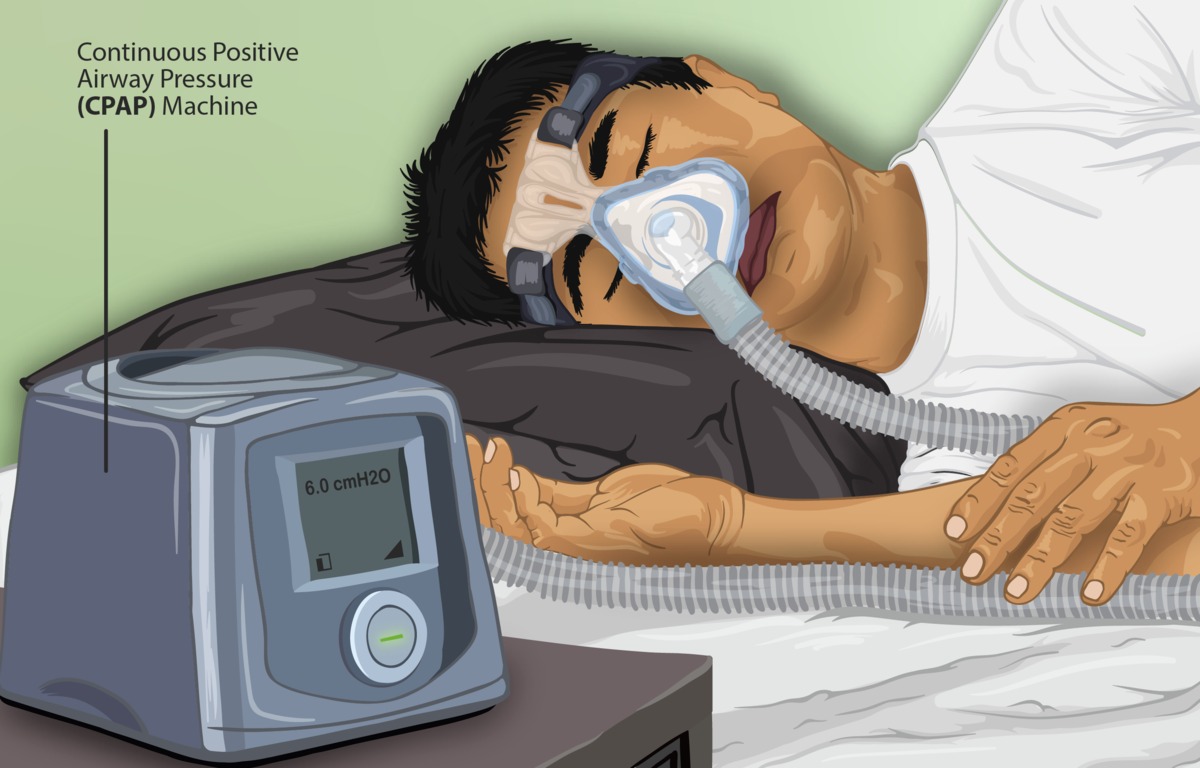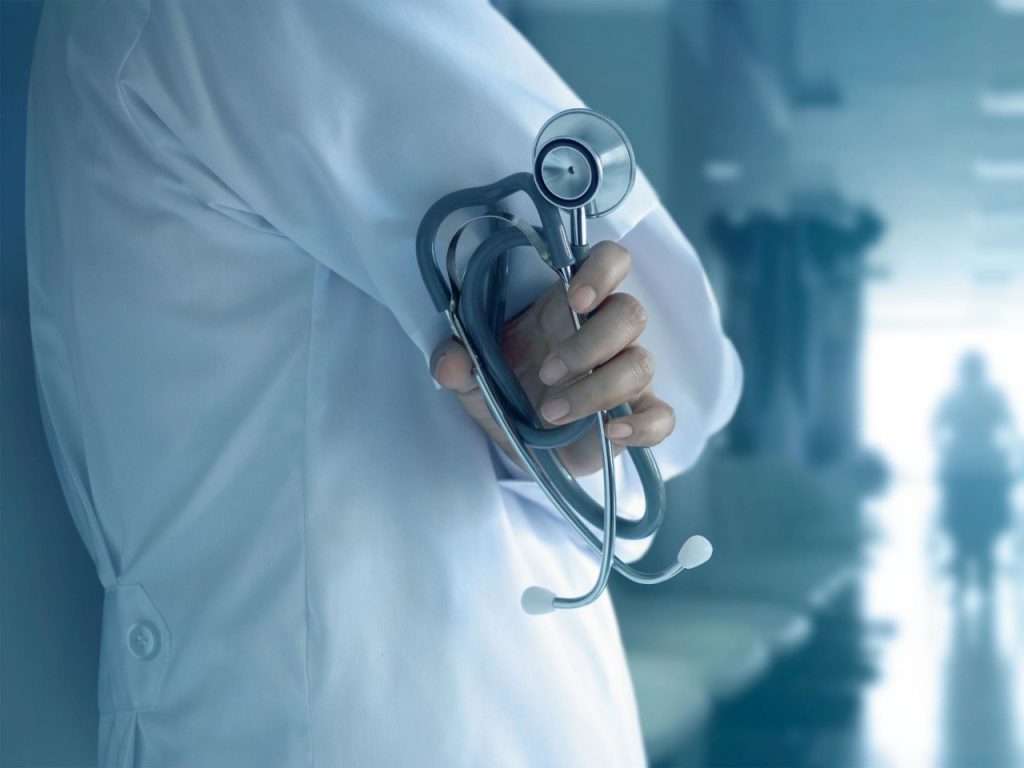CPAP therapy is a way of treatment where a device called CPAP machine delivers air with positive pressure to a patient who is connected to it. It is a method used to improve oxygen levels in the patient’s blood by delivering air (which contains oxygen) in the environment or supplemental oxygen (if an additional source of oxygen is connected). CPAP is different from another device called Bi-PAP. ‘C’ in CPAP means continuous, meaning it delivers air at the same pressure both during inspiration (breathing in) and expiration (breathing out). Bi-PAP delivers different higher pressure during inspiration and lower pressure during expiration.
CPAP machine has other benefits too. It is used in patients who are breathless and struggling to breathe. By delivering air at a higher pressure it helps patients in breathing with less effort so that they conserve energy as well as get relief from respiratory distress. It actually reduces the work of breathing by working like an aid in breathing. In acute respiratory failure due to causes like severe pneumonia, ARDS etc, CPAP therapy can be tried prior to commencing invasive ventilation using a mechanical ventilator.
Another area where CPAP is used widely is in the management of Obstructive sleep apnea (OSA). In OSA, the airway gets blocked during sleep leading to repeated episodes of low oxygen levels in blood. CPAP therapy is the most effective treatment option for those patients with moderate to severe OSA. By releasing air with positive pressure, the blocked airway during sleep is opened and kept open as the pressurized air splints the airway and prevents it from collapsing throughout the sleep. For further details about OSA please refer to the detailed information on OSA provided in a separate section.
What are the other uses of CPAP therapy?
CPAP therapy is used to deliver air and aid in breathing in all those patients who have neurological problems which weaken the breathing muscles and the patient is incapable of breathing adequately (chronic respiratory failure). Ex: Cerebral palsy, Motor neuron disease etc.
CPAP therapy is also used as aid to breathing in those patients who are weaned out of a ventilator support and require support on their own breathing capacity.
CPAP therapy is used in heart failure patients also who are struggling to breathe due to fluid accumulation in the lungs (Pulmonary oedema). It helps relieve the load on the breathing muscles as well as the heart.
What are the various components of a CPAP device?
CPAP device consists of 3 parts
1) CPAP machine
2) Plastic flexible pipe
3) Human interface, which can be a nasal pillow or face mask.
CPAP machine is the main component which generates positive pressure that gets released into the flexible pipe. Through the pipe the pressurized air travels and reaches the patient from the interface which has to be applied to the nose or wider area covering nose + mouth. It is important to use the right size of the interface. Loose fitting mask can cause leakage of air and likewise a tight mask can cause discomfort to patient.
What are different types of CPAP machines?
CPAP machines are broadly 2 types- Automatic (auto-CPAP) and Manual.
Auto-CPAP as the name suggests works automatically to adjust the amount of pressure with which air has to be released. Usually such devices have a sensor in face mask itself which detects the amount of airway obstruction (resistance) and accordingly such information is fed to the main CPAP machine which, works through a preset algorithm to decide the amount of pressure to be released. In case of a manual machine, the pressure released is same as what is set in the machine manually by the operator (technician). Auto-cpap will automatically adjust the pressure as per the airway resistance (dynamic control) while manual machine releases fixed preset pressure only.
Auto-CPAP has another advantage of recording the performance of the machine in a memory stick inserted. It is possible to get a detailed report when this memory stick data is analyzed by a technician. One can check the effectiveness of the machine as well as the amount of average pressure released by the machine. Such facility is lacking in a manual machine.
Your doctor may discuss the best suited device for you. However, Auto-CPAP device is mostly preferred by many patients due to the obvious advantages. Sometimes, patients may not tolerate the Auto-CPAP in which case the same machine can be switched to the manual mode.
What are the side-effects of CPAP therapy?
- Most patients report discomfort due to the tight fit of the face mask in the initial days.
- Some patients develop dryness of mouth and nose due to the dry air which is generated by the CPAP machine. Using an additional device called “humidifier” attached to the CPAP machine will solve this problem. If you are using a humidifier then make sure you use clean distilled water in the humidifier chamber and replace it daily.
- Occasionally some patients feel suffocated while connected to the CPAP device. There is sufficient flow of external air through the piping system at all the time. There are small openings at the junction of the pipe and face mask which cause venting of the air released from the patient during expiration and also allow air to enter for breathing.
- Some patients develop nose block when using CPAP therapy, this can be corrected by using a nasal spray.
- It is possible that during the initial days while using the CPAP therapy you may experience disturbed sleep or sleeplessness. This usually happens due to the constant awareness of the device attached to you. It is important to stay calm and accept the usage of the CPAP therapy which has lot of benefits. After the initial disturbing few days many patients get adjusted to the new way of sleeping and in fact enjoy the quality sleep using the CPAP therapy.
Please contact/consult your doctor if you have any problems due to CPAP therapy. Many problems can be easily fixed and undoubtedly the benefits of CPAP therapy outweigh the minor side effects.
What care should be taken when using CPAP therapy?
- CPAP device is an electronic machine which needs regular check up and servicing to ensure optimal performance (service check every 6 months to 1 year). If you suspect that the benefit is suboptimal then get the machine checked, it is possible that your machine may not be doing its job properly and pose a risk of deterioration of the health condition.
- If you experience return of your symptoms which initially prompted you to consult a doctor, then, it is possible that the CPAP therapy is not effective and the machine/pipe/mask should be checked immediately by a qualified technician/bio-medical staff. Otherwise, arrange to see your doctor as soon as possible.
- The face mask and flexible pipe should be regularly checked for any cracks on its surface which may allow leakage of air. Replace the face mask if you see any signs of wear and tear. Make sure the face mask snugly fits on your face and there are no gaps. You can ask for a demonstration from a technician about the technique of applying the face mask by yourself.
- It is advisable to analyze the data stored in the memory stick every 3 or 6 months to understand the performance of the device (in case of an auto-cpap machine) as well as the benefit to the patient. Stay under regular follow up of your doctor who managed you earlier. Do not be negligent.
- It is advisable to use the CPAP therapy whenever a person is going to sleep. If you sleep during daytime also you are advised to use the CPAP therapy. It was found in a study that daily usage of more than 4 hours gave good benefits. If you use the treatment for 1 or 2 hours in a day then, the benefits of using CPAP therapy are not adequate.
- If you are not applying the mask with correct technique or if there is leakage of pressurized air from a loose-fitting mask then, the benefits of CPAP therapy are not adequate.
- If the mask edges worn out or the mask is damaged or the plastic pipe is leaking then they have to be replaced immediately. Most CPAP machines have to be replaced after 2 to 3 years of usage (if there is regular daily usage)
It is important you deal with authorized dealers for the purchase and maintenance of CPAP machines. Do not buy assembled/refurbished products. Remember this device and its correct usage has impact on your health.



